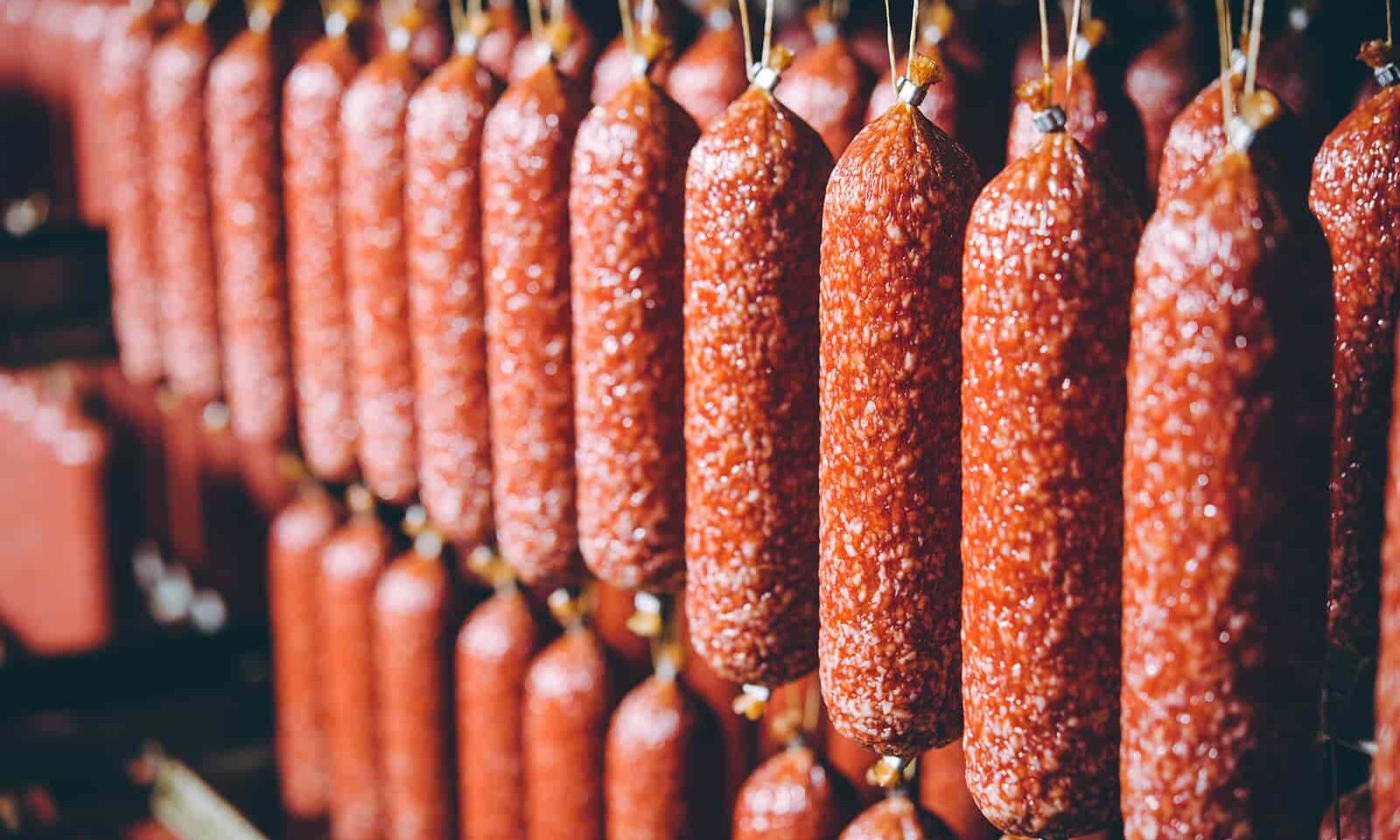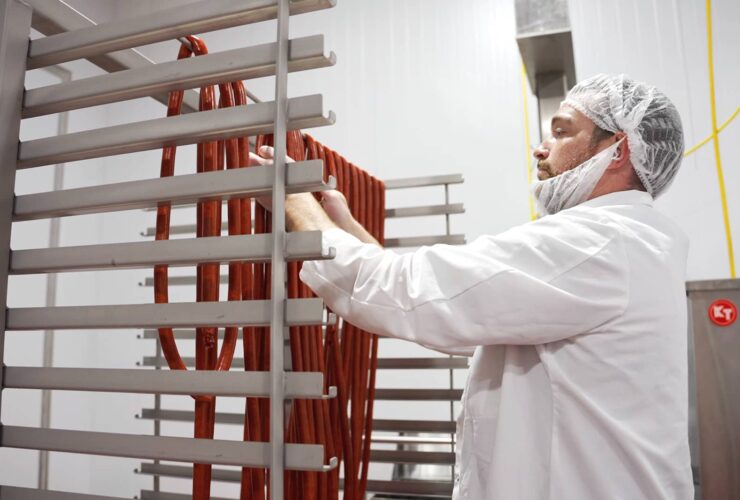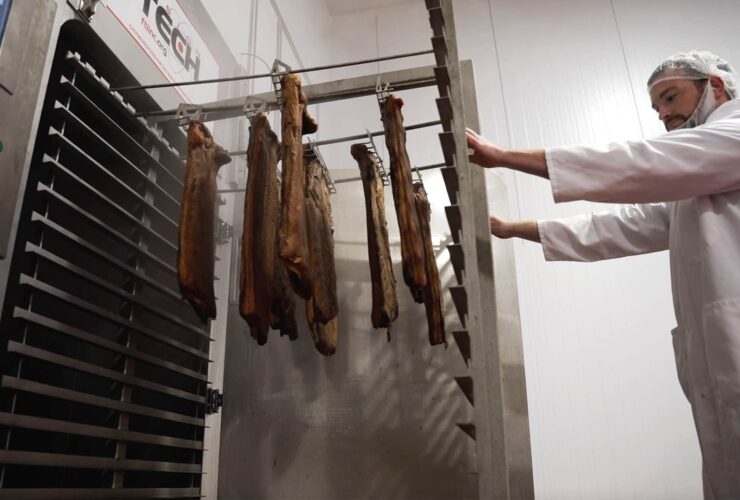Starter cultures are a key element in the production of fermented sausages at scale.
They create a desirable environment for good bacteria to grow, aid in producing the sausage’s flavor, texture, and color, and can shorten the fermentation process by weeks if not months.
Getting the right results, though, can be tricky.
In this article, we’ll explore what starter cultures are, how to choose the right starter culture for your product and give you a breakdown of the various cultures and the flavor they produce.
What are Starter Cultures?
A starter culture is a mixture of beneficial bacteria commonly used to develop color and flavor and aid in the preservation of fermented sausages.
Starter cultures play a crucial role in ensuring the safety and quality of the final product. They are responsible for kickstarting the fermentation process, which helps to preserve the meat and create the characteristic tangy flavor that many people love.
Many are made up of specific bacterial strains that produce lactic acid during fermentation, which helps to acidify the sausage and create an environment that is hostile to the growth of harmful bacteria.
Starter cultures can be classified into the following groups:
- Lactic acid-producing cultures (fermentation)
- Color fixing stabilization cultures (through reductase and catalase activity)
- Flavor-forming cultures (through lipolytic and proteolytic activities)
- Surface coverage cultures (yeasts and molds)
- Bio-protective cultures (producing bacteriocins)
In this article, we’ll be looking at the first two types.
Benefits of Starter Cultures
There are a number of advantages to using starter cultures in your sausage production:
Faster Fermentation
Traditionally produced sausages can require three or more months to make.
Newer and more advanced starter cultures kick off the fermentation process, allowing you to achieve the same results within a few hours.
Food Safety
Starter cultures increase the safety of your sausages because they compete for food with undesirable bacteria. Some also produce lactic acid which lowers pH and creates an environment that inhibits the growth of bad bacteria which can lead to contaminated products.
Health Benefits
Starter cultures also have numerous health benefits.
They contain probiotics that help to improve gut health, boost immunity, and reduce inflammation. This means they not only enhance the taste and texture of your sausage but also promote the overall health and well-being of your customers.
Choosing the Right Culture for Fermenting Sausages
When it comes to making sausages, choosing the right starter culture is just as important as selecting the right meat and spices.
There are many different types of starter cultures on the market, each one more suited to certain types of sausages than others.
Consider these factors when choosing the starter culture for your sausage:
Type of Sausage
First, consider the type of sausage you want to produce.
Starter cultures are designed to work with specific types of products and can produce very different flavors and textures.
You’ll want to find a culture that works for the type of product you are creating as well as the flavor and texture you’re trying to achieve.
Bacteria
Every starter culture contains bacteria and different strains of bacteria will produce different flavors and textures in the final product.
Some cultures will produce a tangy, slightly sour flavor while others will produce a more mild, bitter flavor.
We recommend working with a known starter culture manufacturer with a good culture portfolio to create the unique product with all the attributes you are looking for.
pH Level
The desired final pH level of the sausage (how acidic or alkaline it is) can have a big impact on the flavor, texture, and shelf-life of the sausage.
Some starter cultures like Pediococcus acidilactici are known to rapidly reduce the pH level at higher fermentation temperatures in sausages and produces a very sharp acidic flavor. Whereas, Pediococcus pentosaceus ferments best at lower temperatures and creates a milder acidic flavor partly due to the slower pH drop.
Temperature
The temperature and humidity at which you ferment your sausage should also be considered.
Some starter cultures are best suited for temperatures between 68°F to 86°F, while others are suited for higher temperatures between 86°F to 113°F.
Humidity
Humidity levels should also be monitored closely and tightly maintained depending on the casing the product is stuffed into:
- Collagen or natural casings should be maintained in the 80-90% range.
- Fibrous casings can be in the 85-95% range.
Collagen or natural casings fermented at too high of a humidity setting can denature the casing, causing the product to fall onto the floor of the oven or fermentation room. This will lead to product losses.
All products fermented at too low of a humidity set point can cause case hardening of the sausage, which can inhibit drying further down the process.
Too low of a humidity setpoint also slows your fermentation process due to a reduced water activity on the surface which can be detrimental to the bacteria.
You need to monitor the exterior of the sausages during fermentation to ensure you are creating the product you desire with the equipment you have available.
Fermentation Time
You should also consider the length of time you want to ferment your sausages.
Some starter cultures are designed for shorter fermentation times, while others are better suited to longer fermentation periods.
If mixing starter cultures, start your fermentation at the lowest temperature culture settings, then advance to the higher temperatures later in the fermentation process. This will ensure optimal temperatures for all cultures and prevent the higher temperature cultures from out competing the lower temperature cultures during fermentation.
The manufacturer’s label should give you information about the ideal fermentation period for the starter culture.
Starter Cultures Used in Fermenting Sausages
Once you know the type of sausage you want to produce, as well as the flavor and texture you’re trying to achieve, it’s time to pick the starter culture you want to use.
We’ve broken down the 5 common starter cultures used in fermented sausages produced in the US and give you a brief description of the flavor it produces:
- Pediococcus acidilactici: This culture is known for producing a sharp, tangy flavor with a slight sweetness. It is commonly used in fermented sausages like snack sticks, summer sausage, and pepperoni, and can also help to improve the shelf life of the product by rapidly lowering the pH of the sausage. P. acidilactici is one of the more commonly used cultures in US made products.
- Pediococcus pentosaceus: This culture is known for producing a balanced acidic flavor. It is able develop an effective acidification in a broad fermentation temperature range. It is commonly used in fermented sausages like snack sticks, summer sausage, Lebanon bologna, and other fermented sausages.
- Lactobacillus plantarum: This culture has a mild, yet pronounced sour flavor that pairs well with a variety of meats. It is commonly used in sausages like Genoa, hard and Italian salami’s as well as snack sticks and summer sausages.
- Staphylococcus carnosus: This culture is known for producing a savory, meaty flavor (through a strong proteolytic activity) that is highly sought after in fermented sausages. S. carnosus reduces nitrate to nitrite to promote a better and more stable cured color. It also competes favorably for nutrients in high salt environments thereby excluding growth of other undesirable bacteria.
- Kocuria varians (formally known as Micrococcus varians): This culture can produce fruity and floral notes in fermented sausages. This culture is often used in sausages like soppressata and can help to add a unique twist to the flavor profile of the product. K. varians produces the enzyme catalase which reduces hydrogen peroxide present in the sausage preventing the bleaching of color during drying, and oxidative rancidity. It also breaks down fats (through a lipolytic activity) into free fatty acids which adds flavor to the sausage product.
The choice of starter culture can greatly impact the flavor, texture, and shelf life of fermented sausages.
We recommend testing various starter cultures in small batches to determine which mix will produce the flavor, texture, and shelf life you want for your product. You can also mix cultures to create your own cocktail to get the best of what each species provides.
Storage and Handling
Choosing the right culture is just the start.
In order to get the most out of your cultures, it’s important to handle and store them correctly.
We recommend following the manufacturer’s instructions carefully, as each culture is different, but as a general rule of thumb, follow these tips:
- Store in an ultralow freezer (-40°F) and not in a typical home style freezer or blast freezer
- Keep away from direct sunlight
- Avoid excessive handling
- Thaw or reconstitute culture in water no more than 100°F when preparing for inoculation of the meat batter during production
As we said, each culture is different and may require unique storage and handling instructions to keep it effective.
Consult the manufacturer’s label to ensure your cultures are operating at an optimal level.
Testing Cultures
Choosing the right starter culture for your sausage depends upon the sausage you’re making, as well as the flavor and texture you’re trying to achieve.
Don’t get frustrated if you don’t get the results you’re after on the first try. It’s a process to get the flavor and texture just right.
Need help with that?
Our food scientists can arrange testing in our Innovation Center to nail down the cultures and factors you need to get the flavor and texture of your sausage just right.
Contact us today for more information.




